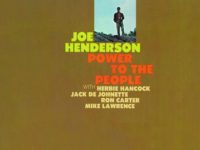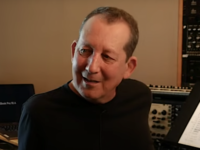Whenever the topic of discussion is a major work of early jazz fusion led by a trumpeter who’s already of renown in the straight jazz arena, most anybody would immediately think of the Prince of Darkness.
But Miles Davis wasn’t the only cat on the horn making the successful transition from acoustic to electric jazz without loss of integrity. Before his full fledged cross over into commercial R&B with 1972’s Blackbyrd, Donald Byrd had some notably more experimental forays into electrified jazz. And then there’s Freddie Hubbard’s epic early-seventies run with the CTI label.
Some people think Straight Life is the gem of that batch, and it is a fantastic record. Me? Man, I gotta go with Red Clay.
By the time Freddie laid down these five studio tracks that make up the original lp at the dawn of the seventies, he had already enjoyed about ten years of fame as one of the very finest hard bop trumpeters of his time. During his hey day, Hubbard exhibited a crystal clear tone, amazing control and just phenomenal chops. He added to Blue Note Record’s unsurpassed sixties catalog with releases like Hub Tones and Breaking Point.
He contributed on some notable releases of other people’s albums, such as Ornette Coleman’s Free Jazz, Oliver Nelson’s Blues And The Abstract Truth and Wayne Shorter’s Speak No Evil. And he even added a standard to the jazz canon, “Little Sunflower”.
But when he signed on with Creed Taylor’s fledgling CTI imprint in 1970, Freddie was not quite done with establishing his legacy.
The jazz scene by this time was rapidly changing. The modal workouts and “New Thing” experiments of the sixties were giving way to the electrified r&b and funk cocktails by the turn of the decade. Later, this would become watered down until it became too bland to be considered “jazz” anymore. But early on some of the more astute of the of jazz heavyweights of that time were able to blend in the more popular influences while maintaining everything that was interesting and unpredictable about jazz.
Hubbard was one of those guys and to him, it was a logical progression; he had started moving more firmly in the r&b direction since 1966’s Backlash. Now with Miles Davis opening up the floodgates of fusion, it was time for Hubbard to make his own crossover statement.
Enlisting an all star crew of Joe Henderson (tenor saxophone), Herbie Hancock (electric keyboards), Ron Carter (acoustic and electric bass) and Lenny White (drums), Hubbard put their talents behind a uniformly strong set of songs that were mostly blues-based modals at heart with memorable choruses but left plenty of room for some of the spectacular soloing these topliners could provide in their sleep. And every track not just swings, but grooves and sometimes grooves hard.
None of these attributes were more apparent than at the outset with the leadoff track “Red Clay”. The track commences “A Love Supreme” style with Hubbard making a statement around a single note followed by White’s funky rhythm and the six chord theme underpinned by Carter and Hancock.
Then Hubbard goes to work on some improvisation brimming with ideas and staying in the pocket while Ron Carter provides excellent support (and a bit incredible for a guy who’s been known as one of the all time great acoustic bassists and didn’t dabble in electric much aside from this period).
Hancock is more subdued as if not to upstage the horn players, but with Head Hunters still three years away, he was already showing how effectively he can work a funky groove with a warm-sounding Fender Rhodes. Henderson, whose career as a sax player had followed a similar career track to Hubbard’s, lays down his signature inside-outside technique here as well as throughout the whole album.
The rest of the album is not quite at the level of the first tune, but remains very strong. “Delphia” is a primarily a light waltz that reveals more of Hubbard’s poetic side. “Suite Sioux” is a rather knotty composition with shifting tempos but Hubbard effortlessly navigates through the changes, as does Henderson.
“The Intrepid Fox” with it’s standard bass walk is really a straight ahead number but with an interesting staggered theme that wouldn’t be out of place on a classic sixties Blue Noter or Davis’ The Sorceror. Hancock shines particularly well in his progressive hard bop workout mode.
The proper album is wrapped up by the only cover, a rendition of the contemporary solo John Lennon single “Cold Turkey” that provided little more than a launching point for more of Hubbard and Company’s extended improvisations.
In 2002, Columbia Records released a new version of Red Clay that added a 19 minute long bonus track which is a live, extended jam version of the title track that blows away an already outstanding studio recording. Stanley Turrentine replaces Henderson on sax but George Benson provides a smokin’ guitar solo and Hubbard’s playing is red hot as well.
So whether you are exploring Hubbard’s electric period, early rock-jazz fusion beyond Miles or the CTI catalog, the answer to the question “where do I start” is the same: Freddie Hubbard’s 1970 masterpiece Red Clay. Oh, and then go get Straight Life.
- How Norah Jones Continued to Push Against Convention With ‘The Fall’ - November 23, 2024
- McCoy Tyner and Joe Henderson – ‘Forces of Nature: Live at Slugs’ (2024) - November 21, 2024
- Lydia Salnikova, “Christmas Means a Different Thing This Year” (2024): One Track Mind - November 19, 2024




